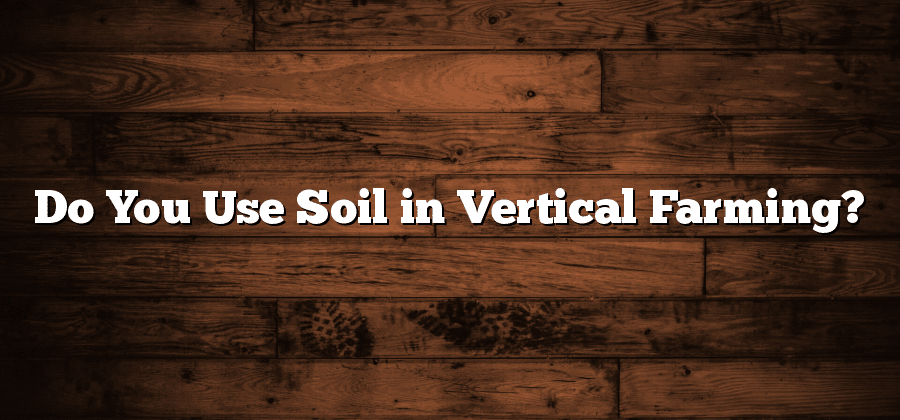Importance of Soil in Traditional Agriculture
Soil is the cornerstone of traditional agriculture, playing a vital role in the success and yield of crops. Agriculturists have long recognized the significance of soil’s physical, chemical, and biological properties in fostering optimal plant growth. The composition of soil directly affects the availability of essential nutrients, water retention capacity, and the overall health of plants. Farmers have relied on soil for centuries, as it provides a natural medium that supports root development, anchors plants, and acts as a reservoir for water and nutrients.
The quality of soil directly influences not only crop productivity but also the overall sustainability of agricultural practices. Healthy soil enhances the soil structure, allowing the sufficiency and accessibility of air and water to plant roots, while also enabling beneficial soil microorganisms to thrive. Furthermore, soil acts as a natural buffer, preventing erosion and protecting against extreme weather events. The careful management and preservation of soil are imperative to maintain fertile lands for future generations and ensure the long-term viability of traditional agricultural systems.
Understanding Vertical Farming
Vertical farming is a modern agricultural practice that has gained popularity in recent years. This innovative technique involves growing crops in vertically stacked layers, using controlled environments such as indoor facilities or greenhouses. The aim of vertical farming is to maximize the use of limited space and resources while increasing crop yield and quality.
One major advantage of vertical farming is its ability to bypass the limitations of traditional agriculture, such as dependence on favorable weather conditions and availability of arable land. By utilizing artificial lighting systems and climate control mechanisms, vertical farms can provide optimal growing conditions throughout the year. This means that crops can be grown in places with extreme climates or in urban areas where land is scarce. Additionally, vertical farming also reduces the need for harmful pesticides and herbicides since the controlled environment creates a natural barrier against pests and diseases.
Soilless Systems in Vertical Farming
Soilless systems have emerged as a revolutionary approach in vertical farming, enabling growers to cultivate crops without the use of traditional soil. This method involves the substitution of soil with alternative mediums that provide adequate support and nutrients for plant growth. One such soilless system is hydroponics, which utilizes a water-based nutrient solution to feed the plants directly. By controlling the nutrient concentration, pH levels, and water supply, hydroponics offers precise control over the growing environment, resulting in faster plant growth and higher crop yields. This makes it an ideal choice for vertical farming, where space is limited, and efficient resource utilization is crucial.
Another soilless cultivation method gaining popularity in vertical farming is aeroponics. In this system, plants are suspended in air, and their roots are misted with a nutrient-rich solution. The absence of soil allows for enhanced oxygenation, improving nutrient absorption and stimulating growth. Additionally, aeroponics minimizes the risk of soil-borne diseases and pests, reducing the need for pesticides and chemical treatments. This clean and sustainable approach to farming not only eliminates the need for soil but also conserves water and reduces the overall ecological footprint.
Hydroponics: A Soil-Free Approach
Hydroponics is a revolutionary approach to cultivating plants without the need for soil. This soil-free technique has gained significant popularity in recent years due to its numerous benefits and advantages. With hydroponics, plants are grown in a nutrient-rich water solution, allowing for efficient absorption of essential nutrients and minerals. This controlled environment minimizes the risk of diseases and pests, resulting in healthier and higher yielding crops. Additionally, hydroponics allows for year-round cultivation, making it ideal for areas with limited space or unfavorable weather conditions. By eliminating the reliance on soil, hydroponics offers a sustainable and environmentally friendly alternative to traditional agriculture practices.
In hydroponic systems, plant roots are either suspended in the nutrient solution or supported by an inert medium such as perlite, coco coir, or rockwool. This method ensures that plants receive the necessary water and nutrients directly, without the interference of soil. The nutrient solution is carefully monitored and adjusted to provide optimal conditions for plant growth, minimizing water waste and maximizing resource efficiency. Hydroponics also allows for precise control over pH levels, temperature, and lighting, facilitating faster growth and higher yields. Moreover, the absence of soil eliminates the risk of soil-borne diseases and reduces the need for pesticides and herbicides, making hydroponics a cleaner and more sustainable agricultural practice.
Aeroponics: Another Soilless Cultivation Method
Aeroponics is a soilless cultivation method that has gained significant attention in recent years. It involves growing plants in an air or mist environment without the use of soil or other traditional growing media. This innovative approach utilizes a nutrient-rich mist that is periodically sprayed directly onto the plant’s roots, allowing for efficient absorption of essential nutrients. By delivering nutrients directly to the root zone, aeroponics offers several advantages over traditional soil-based agriculture.
One of the key benefits of aeroponics is its ability to maximize the use of resources. Without the need for soil, plants can be grown vertically in stacked systems, reducing the overall footprint required for cultivation. This enables farmers to produce a higher yield in a smaller space, making it an ideal solution for urban farming or areas with limited land availability. Additionally, aeroponics drastically reduces water consumption compared to traditional farming methods, as the nutrient-rich mist is continuously recycled, minimizing water wastage. Such efficient use of resources is not only environmentally sustainable but also offers economic benefits to farmers.






